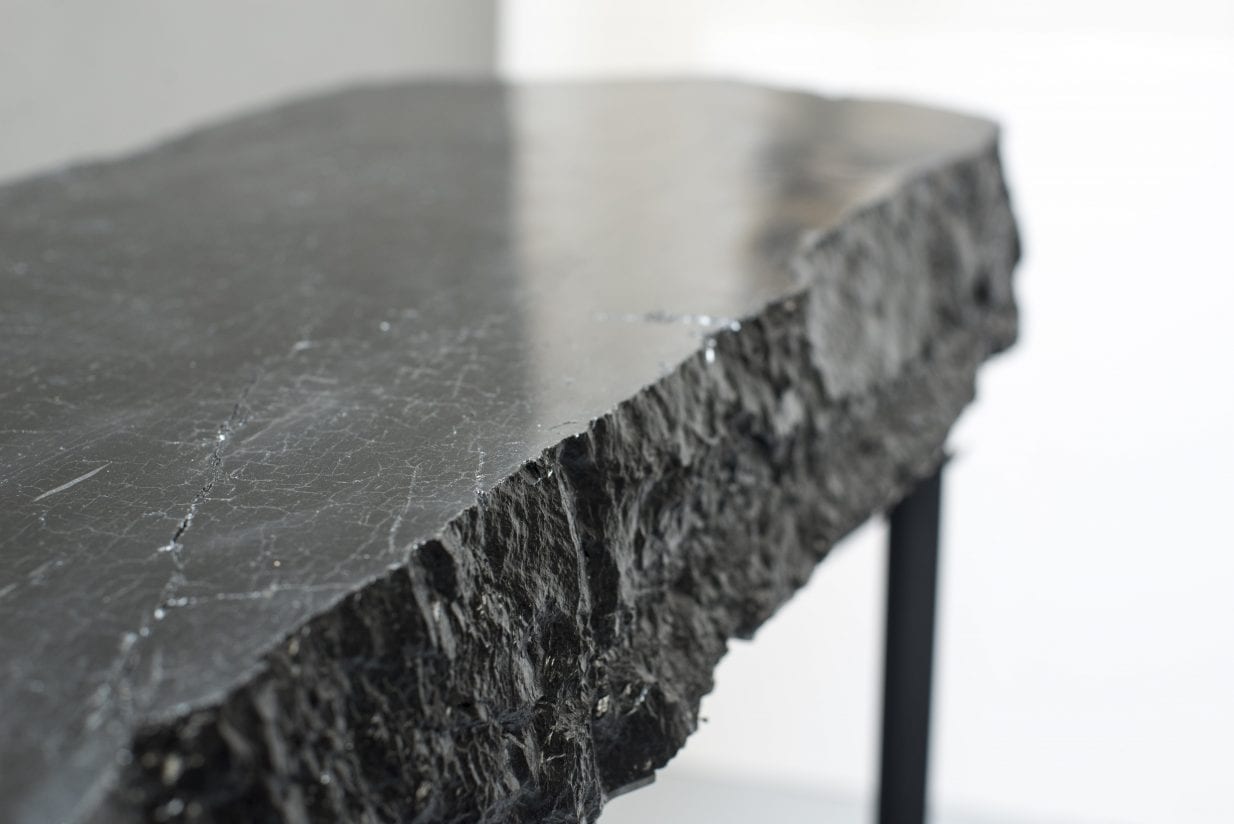Coal, Post-Fuel: A Material Revolution
London-based designer Jesper Eriksson presents a series of five pieces of furniture which explores coal in conjunction with common materials: glass and steel. By Aarti Mohan
London-based artist and designer Jesper Eriksson is fascinated by human culture and their relationship to materials in a socio-economical context. He has created furniture using coal, exploring this iconic dirty fossil fuel as a substance to be cherished and elevating it to the likes of marble.
 Once celebrated for its latent use as an energy source, the fossil fuel is today deemed dirty and redundant. In the UK, the government has announced that they will stop burning coal for energy production by 2025, and in the US, renewable energy usage recently surpassed coal for the first time ever.
Once celebrated for its latent use as an energy source, the fossil fuel is today deemed dirty and redundant. In the UK, the government has announced that they will stop burning coal for energy production by 2025, and in the US, renewable energy usage recently surpassed coal for the first time ever.
It is this vastly shunned material that the designer Eriksson has tapped into and made the consumer look at its inherent property as a functional raw material.
“Coal is traditionally seen as a functional raw material; from being a fuel that releases carbon dioxide to a precious design object with no harmful effects on the environment,” he says.
Eriksson creates furniture and other objects in solid using solid ‘Hard Coal’ or ‘Anthracite Coal’ sourced from Welsh mines. This specific form of coal is much harder and resistant due to its high content of carbon making it an ideal material to create this collection. Anthracite coal is a compact variety of coal that has a submetallic luster. It has the highest carbon content, fewest impurities and highest energy density of all coal types. (Nearly 100% pure carbon – not to be confused with charcoal.) with parts left in the material’s raw state and a finish like black marble. His structural investigation into coal establishes a new value and beauty for the material. “My interest as a designer and artist is to understand, untangle and disrupt the human relationship with coal in order to create new contemporary narratives. What if we assigned a new meaning to coal? What if we decided to use coal as a building material rather than burn it? After all, it is the CO2 that is released from burning it that is harmful, not the material. In fact, the compressed organic sedimentary rock, or million year-long geological processes is itself rare and quite extraordinary carbon conservation – a way to store energy not to release it”, says the designer.
“My interest as a designer and artist is to understand, untangle and disrupt the human relationship with coal in order to create new contemporary narratives. What if we assigned a new meaning to coal? What if we decided to use coal as a building material rather than burn it? After all, it is the CO2 that is released from burning it that is harmful, not the material. In fact, the compressed organic sedimentary rock, or million year-long geological processes is itself rare and quite extraordinary carbon conservation – a way to store energy not to release it”, says the designer. 
Anthracite is between 90% to 95% carbon, which makes it harder and thus easier to work with than other forms of coal. using a diamond-edged blade he creates smooth surfaces where necessary and favors raw edges where possible, before finishing each piece with a natural stone sealant. the collection is currently on show at the Mint, a design gallery in South Kensington in London.








